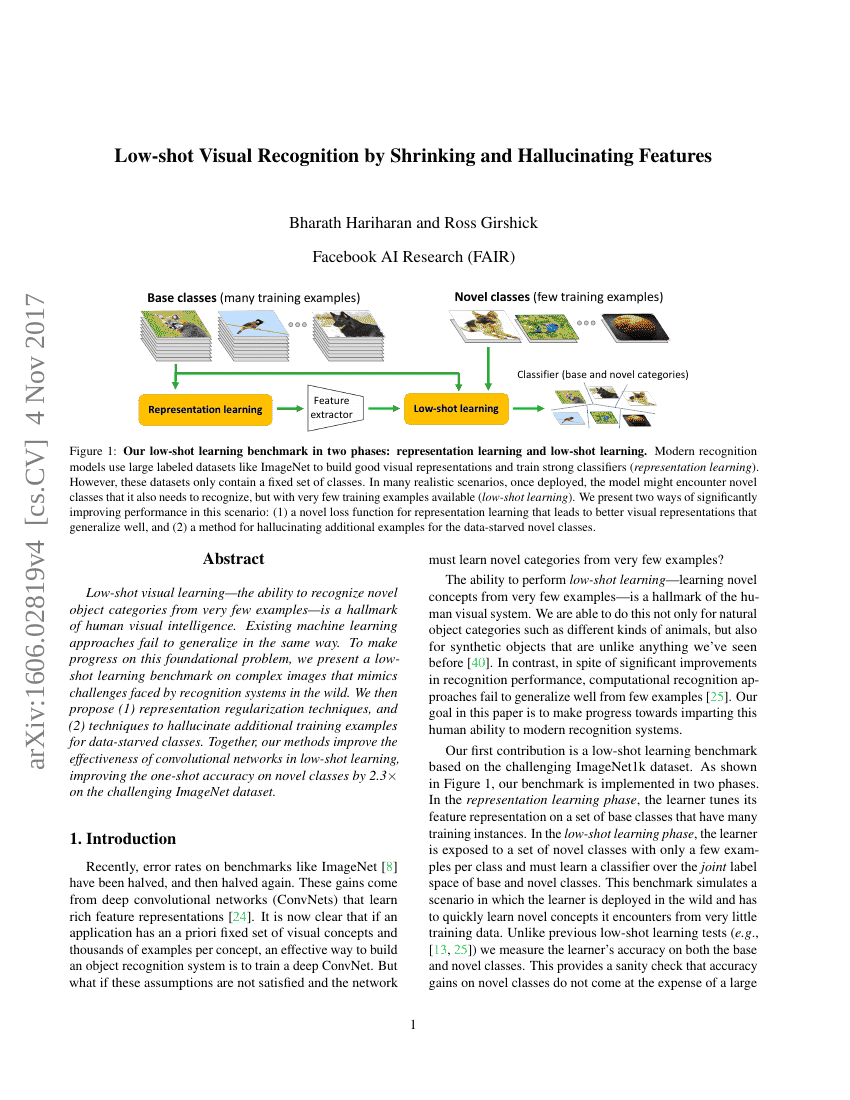Command Palette
Search for a command to run...
Bharath Hariharan; Ross Girshick

Abstract
Low-shot visual learning---the ability to recognize novel object categories from very few examples---is a hallmark of human visual intelligence. Existing machine learning approaches fail to generalize in the same way. To make progress on this foundational problem, we present a low-shot learning benchmark on complex images that mimics challenges faced by recognition systems in the wild. We then propose a) representation regularization techniques, and b) techniques to hallucinate additional training examples for data-starved classes. Together, our methods improve the effectiveness of convolutional networks in low-shot learning, improving the one-shot accuracy on novel classes by 2.3x on the challenging ImageNet dataset.
Code Repositories
Benchmarks
| Benchmark | Methodology | Metrics |
|---|---|---|
| few-shot-image-classification-on-imagenet-fs | SGM (ResNet-50) | Top-5 Accuracy (%): 52.9 |
| few-shot-image-classification-on-imagenet-fs-1 | SGM w/G (ResNet-50) | Top-5 Accuracy (%): 64.9 |
| few-shot-image-classification-on-imagenet-fs-1 | SGM (ResNet-50) | Top-5 Accuracy (%): 67.0 |
| few-shot-image-classification-on-imagenet-fs-6 | SGM w/ G (ResNet-50) | Top-5 Accuracy (%): 77.3 |
| few-shot-image-classification-on-imagenet-fs-6 | SGM (ResNet-50) | Top-5 Accuracy (%): 77.4 |
Build AI with AI
From idea to launch — accelerate your AI development with free AI co-coding, out-of-the-box environment and best price of GPUs.